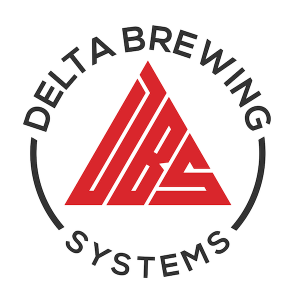Author: Marshall Schott
As much as I appreciate cleanliness, I hate cleaning with a passion. It sucks. Unfortunately, it’s one of the more important aspects of brewing– dirty gear makes dirty beer. Over the years, I’ve settled on a few methods I’ve found make the arduous task of clean-up a bit less annoying. Obviously, this is based on my particular setup and may not necessarily be as helpful for folks using different gear or who are more/less anal than me. Also, I tend to focus more on ensuring my cold-side equipment is clean since there aren’t many beer spoiling critters that can survive a boil. With that, here’s what works for me!
Given my abhorrence for cleaning, I should note that “step 1” for each of the methods listed below is the same: pour a beer and enjoy.
| MASH TUN |
I always clean my mash tun immediately after collecting the sweet wort and waiting for it to reach a boil. I’ve heard horror stories of people discovering tuns full of stinky mold infested grain weeks after brewing, this is something I wish to avoid. I currently use a converted cooler MLT to mash my grains, often with a BIAB fabric filter that did simplify my cleaning process– pull out bag, dump grains, then spray the bag and tun with high pressure water from the hose. This takes no longer than 2 minutes.

When not using the bag, I hoist the MLT onto the edge of my compost bin, pour the grains in, use my hand to sweep straggling grain bits out, then proceed to rinse. Any time difference between this and the bag method is negligible, though I tend to prefer the ease of removing the bagged grains. Back when my MLTs were outfitted with 3-piece ball valves, I would blast water through the output while slowly opening and closing the valve a few time to rinse the innards. Occasional checks revealed this worked fairly well. Since swapping to Quick Clean Take-Apart Ball Valves, I simply loosen a knob, pull the thing apart, and spray it all down until clean. Couldn’t be easier.
I’ve been using the same coolers for over 4 years and not once have I used anything other than water to clean them.
I know of others, a couple Brülosophy contributors included, who use stainless mash tuns and do things a bit different, preferring to treat them similarly to the way I do my kettles.
| KETTLE |
My kettle cleaning regimen consists of a few simple steps completed in a matter of minutes. Again, my kettles get cleaned as soon as the wort they once contained has been transferred to carboys. I start by pouring any remaining kettle trub down the drain then remove and clean the ball valve as outlined above. With all chunky debris out of the way, I give a quick scrub with a scouring pad to remove any dried bits ringing the kettle as well as loosen the gunk plastered to the bottom. This is followed by another high pressure rinse then I usually call it good. After about 20 or so batches, the bottom of my kettle will start to develop an off-colored layer that cannot be scrubbed off with water and scouring pad. While I’m highly doubtful this stuff has any impact on beer character, the vanity bug occasionally bites and I take measures to bring back that pretty shine.
You’d be hard-pressed to find a product with a better price to effectiveness ratio than Bar Keeper’s Friend, a cleaning powder that uses oxalic acid as the active ingredient. A light dusting and a bit of elbow grease quickly removes any build up, returning your kettle to its lustrous virgin state. BKF is also a fantastic solution for ring-around-the-toilet, dirty stoves, and stained sinks, but has little utility in other areas of the brewery. For those looking for a multipurpose solution, I’ve experienced similar results with CraftMeister’s Alkaline Brewery Wash, which can be used to clean so much more than just kettles, as I will discuss in a bit.
grease quickly removes any build up, returning your kettle to its lustrous virgin state. BKF is also a fantastic solution for ring-around-the-toilet, dirty stoves, and stained sinks, but has little utility in other areas of the brewery. For those looking for a multipurpose solution, I’ve experienced similar results with CraftMeister’s Alkaline Brewery Wash, which can be used to clean so much more than just kettles, as I will discuss in a bit.
| IMMERSION CHILLER |
 Likely due to my adoration and advocacy for high quality immersion chillers, I’m often asked how I go about keeping mine clean. One of the many reasons I prefer immersion chillers over other options is that cleaning is so easy. Before I start chilling the wort, I run the output
Likely due to my adoration and advocacy for high quality immersion chillers, I’m often asked how I go about keeping mine clean. One of the many reasons I prefer immersion chillers over other options is that cleaning is so easy. Before I start chilling the wort, I run the output  hose to a bucket to catch the first and hottest runoff. Once chilling is complete, I place the IC in the bucket and move it around a bit to release any debris. Finally, I spray the chiller off and put it away. That’s it. No cleaners, no scrubbing, just rinsing. My King Cobra IC requires the use of a larger bucket given it’s girth, though the Hydra and most other chillers fit perfectly in a standard 6 gallon fermentation bucket.
hose to a bucket to catch the first and hottest runoff. Once chilling is complete, I place the IC in the bucket and move it around a bit to release any debris. Finally, I spray the chiller off and put it away. That’s it. No cleaners, no scrubbing, just rinsing. My King Cobra IC requires the use of a larger bucket given it’s girth, though the Hydra and most other chillers fit perfectly in a standard 6 gallon fermentation bucket.
| CARBOYS |
In my opinion, the piece of equipment most vulnerable to contamination in any brewery is the fermentor, as this is where the beer is left for long periods of time at temperatures ideal for many wild yeasts and bacteria. Because of this, I focus a large portion of my cleaning energy on making sure my carboys are pristine. I highly prefer 6 gallon PET carboys or Better Bottles, though these tips work just as well with glass and even plastic buckets. I start by pouring any leftover beer and yeast down the drain of my utility sink then, using a hose I attached to the faucet, I spray the inside of the carboy out with a high pressure stream of hot water until all that remains is the kräusen ring. From here, I add the proper amount of my preferred cleaner, fill the carboy with warm water, and let it sit for an hour or so, sometimes overnight, before emptying and rinsing.
When it comes to cleaners, I’ve tried a few and developed opinions on each. OxiClean Free was my go-to for awhile, mainly because I could pick it up on a whim while grocery shopping. It worked pretty good, though often failed to remove all of the kräusen ringing the inside of my carboys. In search of something more effective, I acquired some Keg and Carboy Cleaning Tablets made by CraftMeister, which I decided to compare to OxiClean Free following the kegging of a couple xBmt beers. Both carboys were rinsed well and had similar looking kräusen rings remaining prior to receiving their respective cleaner.
Next, each was filled with hot water then dosed with either 2 tablets (per instructions) or a half scoop of OxiClean Free. Within minutes, bubbles were rising up the walls of both carboys, a sign the cleaners were doing something, though the carboy hit with the tablets appeared quite a bit more active and generated more foam. I checked on them every 30 minutes or so, both carboys appeared cleaner on each occasion, but I discovered the OxiClean required nearly an hour longer to achieve the same level of cleanliness as the tablets. Not one to be easily swayed, I repeated this comparison a couple more times and achieved similar results– both products cleaned well, though the OxiClean Free consistently required more time.
The convenience offered by CraftMeister’s Keg & Carboy Cleaning Tablets alone may be enough to convince some brewers to give the product a shot, but as someone who cleans upwards of 6 carboys per month, it didn’t outweigh the cost for me. After some poking around, I decided to try another CraftMeister product in hopes it would be as effective as the tablets.
Additional comparisons commenced, this time CraftMeister’s Alkaline Brewery Wash to both the tablets and OxiClean Free. With just half of a scoop in a full carboy, this stuff plowed through kräusen like nothing I’ve ever seen, producing a pristine clean after less than 45 minutes, and there was zero foam. I was sold!

Finally, in those times where bits of kräusen remain plastered to the inner walls of the carboy even after a long soak, something I’ve not experienced since I started using ABW, there’s a rad solution that doesn’t involve the use of a cumbersome carboy brush. Rather, all you need is a clean washrag.
Simply wet the rag and place it in the freshly drained carboy, turn it on its side, swirl like mad until all the grime is gone, then rinse like normal. This is also a perfect method for those times you don’t want (or can’t) wait the 45+ minutes for the cleaning solution to do its thing.
Like I said, I take carboy cleaning seriously, hence the length of this section. And for those who are curious, I’m not affiliated with CraftMeister.
| KEGS |
I’ve heard of many different ways to clean a keg and really appreciate the more thorough approaches people like Ray take. Some call it laziness, I like to think of it as efficient, but my keg cleaning routine is not quite as involved. I start by pouring any residual beer down my utility sink drain then blasting the inside with a high pressure stream of hot water, making sure to hit the length of the liquid diptube and the bottom of the keg really well. Next, I use a dishwashing brush to scrub the inside of the keg, removing anything the water left behind.
Following another quick rinse, I add about a gallon of really hot water then use a screwdriver to depress the liquid-out poppet, allowing the hot water to flow through the diptube. This is all I do probably 80% of the time. Between every 5-6 uses, I’ll give each keg a slightly deeper cleaning by removing the posts and diptubes then letting them soak in an ABW solution for an hour or so before rinsing and reassembling. It’s during these times I’ll also fill the kegs with the same cleaning solution and leave them to soak for a bit. Following a final rinse, I store my kegs upside down with the lids off to allow them to drain, then prior to being refilled with beer, I sanitize with IO Star iodine sanitizer followed by a rinse with StarSan solution. You can never be too cautious.
| TUBING |
I don’t use much tubing in my brewery these days, mostly just the small amount connected to my sterile siphon starter. Plastic tubing can be a pain in the ass to keep clean, particularly since even the smallest amount of leftover moisture can create a perfect breeding ground for  shit I don’t want in my beer. This is why I like to keep bulk amounts of the sizes I use most often around so I’ve always some at the ready should it be required. For the most part, my tube cleaning routine involves nothing more than running hot tap water through the line immediately after use, rinsing with StarSan, then dangerously spinning it over my head for a good 10 seconds until centrifugal force removes a large portion of the remaining liquid. It is then hung over a hook to dry. There have been times where I’ve noticed scummy build up inside the tubing and was all out of my bulk supply, so I let it sit in a hot cleaning solution until it was gone, it seemed to work fine.
shit I don’t want in my beer. This is why I like to keep bulk amounts of the sizes I use most often around so I’ve always some at the ready should it be required. For the most part, my tube cleaning routine involves nothing more than running hot tap water through the line immediately after use, rinsing with StarSan, then dangerously spinning it over my head for a good 10 seconds until centrifugal force removes a large portion of the remaining liquid. It is then hung over a hook to dry. There have been times where I’ve noticed scummy build up inside the tubing and was all out of my bulk supply, so I let it sit in a hot cleaning solution until it was gone, it seemed to work fine.
| BOTTLES |
I avoid bottling at all costs, though there are times it has to be done, like when I send beers to friends or enter competitions. Being cheap, I certainly appreciate reusing bottles, though I’ll only do so if it was rinsed immediately after being emptied. Who knows what the hell can make its way into a bottle that’s been sitting uncapped in my garage all night? I like to store clean bottles upside down in the box, as it disallows the falling in of airborne contaminants while also creating a slight seal on the mouth of the bottle so other things can’t crawl inside. Prior to filling with beer and after ensuring each bottle is grime-free, I let them soak in an IO Star iodine solution for 5-10 minutes then dunk them in a StarSan solution to rinse.
And there you have it, how I clean my stuff. As is often the case, I’m hesitant to strongly recommend others adopt these methods without first considering their particular setup, as I’d hate for someone to make a switch and have a batch go bad. Ultimately, this is what has worked well for me for years, if you’ve developed a neat cleaning trick, please share it in the comments section below. Cheers!
If you enjoy this stuff and feel compelled to support Brulosophy.com, please check out the Support Us page for details on how you can very easily do so. Thanks!















